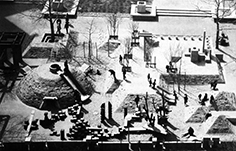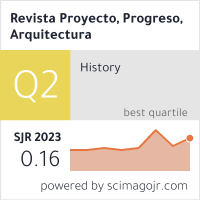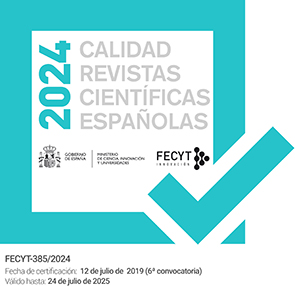RIIS PROJECT: A HAPPENING FOR SOCIAL LIFE
DOI:
https://doi.org/10.12795/ppa.2021.i25.02Keywords:
square, park, playground, urban design, community, New YorkAbstract
When public space is void of uses and people are deprived of making it their own, the space ceases to exist. This situation encourages architects to begin its revitalisation. The Jacob Riis Park (1966) of New York, a work by the urban landscape architect M. Paul Friedberg, enlightens us in this sense. His architectural project is a kind of laboratory in urban form with the aim of redefining the architecture of common spaces. The Riis Project demonstrates a different way to renovate disused spaces in marginal residential areas. Specifically, the children’s playground is the expression of a temporary form of space that condenses social life. Seen from the present day, it broke with previous models, began new lines of discipline in landscape architecture, codified previous knowledge and forecasted its own development through the variations of its form. The Riis Project gathers specific architecture in an expanded field; it is the setting for total play environment, a happening where social life recovers the space from which it was once deprived. The Riis Project shows us the ability that architecture has to transform common space and establish the value of the project as a means for social reform.
Downloads
References
ANGELL BROWN, Marisa. Radical urbanism in the Divide City: On M. Paul Friedberg’s Riis Park Plaza (1966). En:
MCALLLISTER, Meghan; SABBAGHI, Mahdi. Perspecta 50: Urban divides. Cambridge, Mass: Yale School of Architecture, 2017.
BANES, Sally. Greenwich Village 1963. Avant-Garde Performance and the Effervescent Body. Durham: Duke University Press, 1993.
BIRNBAUM, Charles A. M. Paul Friedberg. Oral history. Interview Transcript. Washington: The Cultural Landscape Foundation, 2009.
BRAUNSTEIN, Peter; DOYLE, Michael W. eds. Imagine Nation: The American Counterculture of the 1960s and '’70s. Nueva York: Routledge, 2002.
BURKHALTER, Gabriela. The Playground Project. Zúrich: JRP-Ringier, 2018.
DAGEN BLOOM, Nicholas; GORDON LASNER, Matthew, eds. Affordable Housing in New York: The People, Places, and Policies That Transformed a City [en línea]. Princeton; Oxford: Princeton University Press, 2016. DOI: https://doi.org/10.2307/j.ctvs32rwj.
DIXON, John Morris. Khan-Noguchi Playground proposed for New York. En: Progressive Architecture [en línea]. Nueva York: Reinhold Publishing, marzo 1964, vol. 45, n.º 3 [consulta: 31-01-2021] Disponible en: https://usmodernist.org/index-pa.htm.
DIXON, John Morris. Riis Plaza: Three acres filled with life. En: The Architectural Forum, julio-agosto 1966, vol. 125, n.º 1.
DOUGHERTY, Philip H. On a hot day a kid can go to the Riis Playground and just ‘Let Go’. En: The New York Times, 21 de junio de 1966.
FRIEDBERG, M. Paul; RICCI, Leonardo. “The Path is dead” in Manhattan. En: Landscape Architecture [en línea], 1966, vol. 56, n.º 3 [consulta: 01-02-2021]. Disponible en: www.jstor.org/stable/44671124.
FRIEDBERG, Paul. Play and Interplay. Nueva York: The MacMillan Company, 1970.
FRIEDBERG, Paul M. Performance as Energy (On Synergy). En: SKY, Alison, ed. On Site/On Energy. Nueva York: Site, Inc., 1974.
GOBLE, Emerson. Shaping the community in an era of dynamic social change. En: Architectural Record, julio 1966, vol. 140, n.º 1.
HAMMEL, Lisa. Playing is more than just Fun and Games. En: The New York Times, 14 de agosto de 1967.
HARVEY, David. Ciudades rebeldes: del derecho de la ciudad a la revolución urbana. Madrid: Akal, 2013.
JACOBS, Jane. Muerte y Vida de las grandes ciudades. Madrid: Capitán Swing, 2011.
JUDD, Donald. Objetos específicos (1965). En: Completed writings 1959-1975. Halifax, New York: The Press of the Nova Scotia College of Art and Design, New York University Press, 2005.
KAPROW, Allan. How to make a happening. Nueva York: Primary Information, 2009 [consulta: 03-02-2021]. Disponible en: https://primaryinformation.org/product/allan-kaprow-2/.
KRAUSS, Rosalind. Sculpture in the Expanded Field. En: October, primavera 1979, vol. 8.
LEFAIVRE, Liane; HALL, George. Ground-up city: play as a design tool. Rotterdam: 010 Publishers, 2007.
LEFEBVRE, Henri. El derecho a la ciudad. Barcelona: Península, 1969.
MATESANZ VENTURA, Natalia. Gradas, domos y casitas. Arquitectos activadores del espacio común en la plaza cultural, Nueva York. En: Proyecto, progreso, arquitectura. Arquitecturas al margen [en línea]. Sevilla: Editorial Universidad de Sevilla, mayo 2018, n.º 18.
MEYER-HERMANN, Eva; PERCHUK, Andrew; ROSENTHAL, Stephanie, eds. Alan Kaprow: Art as Life. Los Ángeles: Getty Research Institute, 2008.
MOGILEVICH, Mariana. Landscape and participation in 1960s New York. En: CUPPERS, Kenny, ed. Use matters: an alternative history of architecture. Nueva York: Routledge, 2013.
MOGILEVICH, Mariana. The invention of public space. Minneapolis: University of Minnesota Press, 2020.
NATIONAL BUILDING MUSEUM. Spotlight on Design: M. Paul Friedberg [en línea]. [Consulta: 02-02-2021]. Disponible en: https://www.youtube.com/watch?v=2nUiqrfHp_I.
ROSATI, Lauren; STANISZEWSKI, Mary Anne, eds. Alternative Histories. New York Art Spaces, 1960 to 2010. Cambridge, Mass; Londres: The MIT Press, 2012.
SCHUTZ, Aaron; MILLER, Mike, eds. People power: The community organizing tradition of Saul Alinsky. Nashville: Vanderbilt University Press, 2015.
SHEPARD, Richard F. Avant-Garde Day in Park goes on and on. En: The New York Times, 10 de septiembre de 1966.
TUSET DAVÓ, Juan José. M. Paul Friedberg: Escenografías para el juego en hábitats urbanos. En: BAc Boletín Académico. Revista de investigación y arquitectura contemporánea [en línea], noviembre 2019, vol. 9, pp. 23-44. Disponible en: https://doi.org/10.17979/bac.2019.9.0.4638.
WARSH, Marie. Happenings: art, play and urban revitalization in 1960s Central Park [en línea]. [Consulta: 02-02-2021]. Disponible en: https://www.gothamcenter.org/blog/happenings-art-play-and-urban-revitalization-in-1960s-central-park.
WARSH, Marie. Central Park’s Adventure-Style playgrounds. Baton Rouge: Louisiana State University Press, 2019.
WEINRAUB, Bernard. Mrs. Johnson opens Riis playground. En: The New York Times, 24 de mayo de 1966.
WEINRAUB, Bernard. A Happening called Hoving. En: The New York Times, 10 de julio de 1966.

Downloads
Published
How to Cite
Issue
Section
License
Las ediciones impresa y electrónica de esta Revista son editadas por el Secretariado de Publicaciones de la Universidad de Sevilla, siendo necesario citar la procedencia en cualquier reproducción parcial o total.
Salvo indicación contraria, todos los contenidos de la edición electrónica se distribuyen bajo una licencia de uso y distribución “Creative Commons Atribución-NoComercial-SinDerivar 4.0 Internacional” ![]() . Puede consultar desde aquí la versión informativa y el texto legal de la licencia. Esta circunstancia ha de hacerse constar expresamente de esta forma cuando sea necesario.
. Puede consultar desde aquí la versión informativa y el texto legal de la licencia. Esta circunstancia ha de hacerse constar expresamente de esta forma cuando sea necesario.
Los autores/as que publiquen en esta revista aceptan las siguientes condiciones:
- Los autores/as conservan los derechos de autor y ceden a la revista el derecho de la primera publicación, con el trabajo registrado con la licencia de atribución de Creative Commons, que permite a terceros utilizar lo publicado siempre que mencionen la autoría del trabajo y a la primera publicación en esta revista.
- Los autores/as pueden realizar otros acuerdos contractuales independientes y adicionales para la distribución no exclusiva de la versión del artículo publicado en esta revista (p. ej., incluirlo en un repositorio institucional o publicarlo en un libro) siempre que indiquen claramente que el trabajo se publicó por primera vez en esta revista.
- Se permite y recomienda a los autores/as a publicar su trabajo en Internet (por ejemplo en páginas institucionales o personales) antes y durante el proceso de revisión y publicación, ya que puede conducir a intercambios productivos y a una mayor y más rápida difusión del trabajo publicado (vea The Effect of Open Access).








